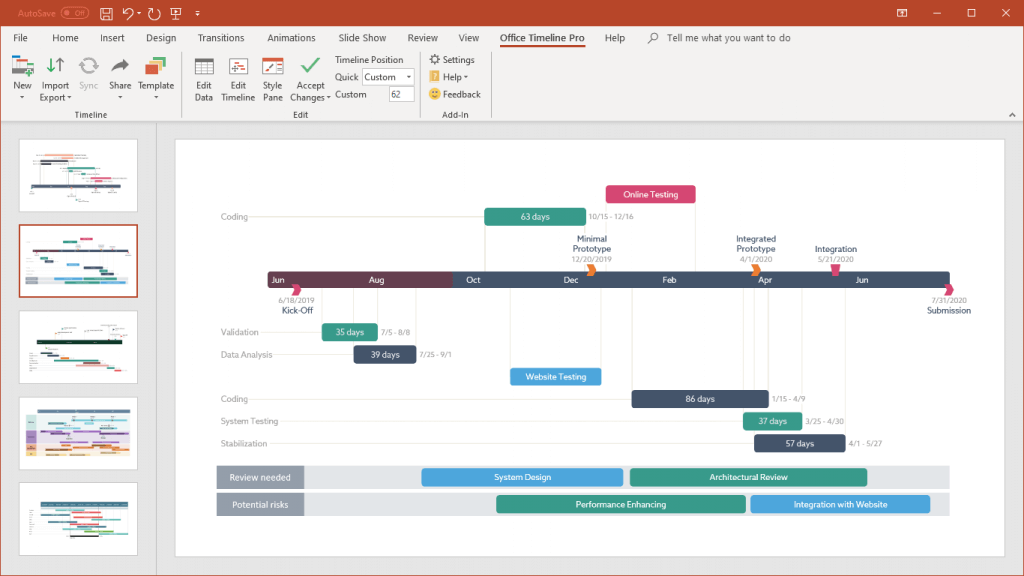
Reporting in the business world has the primary role of keeping your stakeholders well informed about the ongoing operations. By tracking the critical key performance indicators (KPIs), you can evaluate the effectiveness of current strategies and take course-correcting decisions to mitigate the negative impact before it’s too late. But what if you don’t have a centralized format for reporting project status? Read on to find out how a retail solutions provider solved this problem and drastically reduced the time spent in project review meetings.
In this article, you’ll learn more about:
Challenges of reporting in the absence of centralization
Reports come with several intrinsic problems that are in direct correlation with the size of the company and the complexity of the work. For instance, in non-centralized reporting environments, the organization relies heavily on a handful of star employees, rather than leveraging the full potential of the entire team; centralization lowers this dependency.
Being able to track and report the progress of an operation accelerates the integration of junior staff members within ongoing projects and makes optimal use of available resources. Other challenges that can be overcome by switching to a unified reporting model might include:
- Lack of understanding regarding the current project status
- Inconsistent interdepartmental communication
- Limited awareness about key performance metrics and their impact
- Very few means to accurately benchmark performance
- Inability to determine and reproduce the most effective solutions
- A lot of time spent collating and interpreting the data
Another caveat, according to a study made by EY Global, is that well over two-thirds of CFOs consider the growing volume of data collected nowadays has a negative effect on the relevancy of the insight obtained. In other words, being bombarded with a flood of unstructured information can, in fact, be counterproductive for decision making. As such, the requirement for a centralized reporting strategy is crucial to the success of your business.
Case study: how Aptos standardized their project reviews
To better understand the impact, let’s examine how report standardization helped Aptos, a company specialized in the development and integration of cloud-based solutions for the retail world. A quick look over their client list reveals major players from various industries, including but not limited to J.C. Penney’s, CVS and Bed Bath & Beyond, but also niche brands like Michael Kors, Movado and Tommy Bahama.
Peter Taylor, the Head of Global PMO for the company, was on the lookout for a centralized reporting tool, one that could build standardized Gantt chart-like reports in a consistent and easy to update format. His main concern was to eliminate from the equation reports that were clunky and difficult to read, by providing Project Managers with a one-size-fits-all solution.
The answer came from one of their project admins, who discovered Office Timeline, a PowerPoint add-in that creates professional-looking project visuals in seconds. Because it’s such a straightforward application, implementing it in her daily reporting process was a breeze. Soon, other employees in that branch started using it as well, and news reached the head office.
Rolling out Office Timeline as a standardized reporting solution was seamless, and it wasn’t long before the benefits became noticeable. In short, the company reported that project reviewing time was effectively sliced by half and the reporting procedures were simplified a great deal.
To put that into perspective, prior to integrating Office Timeline, there were four weekly calls (1.5 hours each) just for reviewing project progress with the PMs. After the implementation, everything is handled in just two meetings. The PMs are now free to put more time into working closely with the clients and developing better solutions to answer to their needs.
5 tips & tricks to help you address your reporting challenges
Selecting a suitable reporting tool is just the first step towards optimizing the process of reporting, albeit a critical one. In order to really make the most of it, we’ve selected a couple of tips to help you get started:
1. Setting strategic goals
Diana Scharf-Hunt, the author of several best sellers on time management techniques, once noted that “Goals are dreams with a deadline”, and deadlines are an excellent reminder to always keep the endgame in mind. Defining what a successfully-achieved objective looks like allows you to reverse engineer the KPIs and divide it into 3-4 subordinate goals, as well as splitting the tasks accordingly.
2. Selecting the correct KPIs to track (according to the audience)
Don’t put all your KPIs in one basket, conventional wisdom teaches us. To capture the attention of your viewers, a good place to start is to ask yourself who the audience is. For instance, a Marketing manager will be interested in a completely different set of data than the team leader of the Sales department. Filter the KPIs in your report accordingly and deliver each bit of information to the correct recipient.
3. Transforming data into a storyline
According to modern adult learning theories, the human mind can absorb data much easier when it is structured in the form of a linear story. Hard data featuring numbers and percentages must, therefore, be outlined in the context of a narrative. One way to achieve this is by creating timelines that display historical progress. Bonus: Place the KPIs on the roadmap and contrast them against past values to create trend predictions.
4. Creating clear and visually appealing graphical representations
Still on the subject of how our brain processes and interprets data, there’s a limit to how much information you can feed the audience before they feel overwhelmed. As a result, this translates into decision fatigue, the inability to make high-quality choices. In reporting, the rule of thumb should always be ‘’less is more”, especially in terms of selecting the KPIs to present. When you’re creating graphs, place the emphasis on an average of 3 major KPIs. If others must be included, make sure they don’t share the same spotlight.
5. Shifting from paper to digital
Paperback reports may have been all the rage in the past, but the advent of technology allows us to move past the outdated model and towards the digital age. Significantly easier to compile and update, reporting software can help you create clear, simple, professional-looking charts and graphs. At the same time, some solutions integrate collaborative features. These allow other teams to offer their input, based on which management can reach accurate conclusions and take grade-A business decisions.
Conclusions
In the words of Henry Ford, “Most people spend more time and energy going around problems than in trying to solve them”. Improving the way reporting is conducted in your organization will have a major impact on how resources (time, funds, employees, etc.) are allocated and, in turn, productivity will grow. Centralized reports guarantee that all stakeholders have access to the information they need when they need it, and all business decisions are made based on real data.

Turn project data into professional timelines
Get the advanced features of Office Timeline Pro+ free for 14 days.
Get free trial